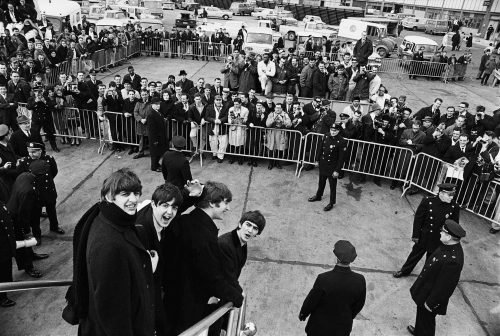In the early 1960s, a musical phenomenon erupted out of Liverpool that would forever alter the landscape of popular music. The Beatles, a quartet consisting of John Lennon, Paul McCartney, George Harrison, and Ringo Starr, transcended the boundaries of rock and roll to become global icons. The frenzy they ignited, known affectionately as Beatlemania, was characterized by intense fan adoration, media saturation, and unprecedented commercial success. This tidal wave of enthusiasm began around 1963, after the release of their hit singles “Love Me Do” and “Please Please Me,” reaching a fever pitch as they invaded America in 1964.
Beatlemania was not merely a musical or entertainment phenomenon; it was a cultural earthquake, with aftershocks that reverberated through various facets of life. The Beatles influenced not just music but also fashion, film, politics, and social norms. Their long hair and unique style challenged the era’s sartorial conventions, signaling a broader shift toward youth-led cultural liberation.
The Beatles as Cultural Icons
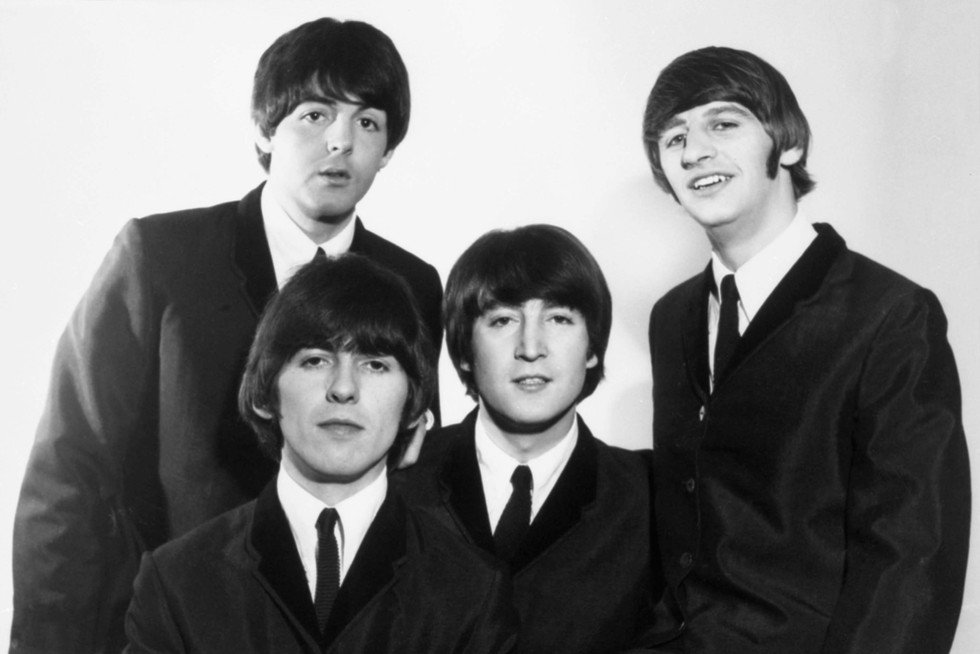
From the moment they stepped into the global limelight, The Beatles were not just musicians; they were trendsetters who shaped the very fabric of 1960s fashion and cultural identity. Their influence extended well beyond their music, creating a style that became emblematic of a new era of youthful expression and rebellion against the conformist norms of the previous generation.
Breaking the Mold with Iconic Hairstyles and Attire
The Beatles’ arrival on the pop culture scene coincided with a dramatic shift in men’s fashion, marked initially by their signature “mop-top” haircuts. This hairstyle, characterized by its length over the ears and bangs brushed forward, was unlike the short, slicked-back styles that dominated the 1950s. The mop-top was a visual rebellion against the strict grooming standards of the time and quickly became a symbol of youth and modernity. Fans around the world, both male and female, began emulating their idols, growing their hair longer and adopting more casual, less structured attire as part of their everyday wardrobe.
From Suits to Psychedelia: A Fashion Evolution
The Beatles’ fashion evolved significantly throughout their career. Initially, they were often seen in matching suits, which helped to present them as a cohesive group. However, these were not the traditional suits of the earlier era but sharper, more modern designs, often with narrow lapels and collarless jackets, which set them apart from the crowd. As the 1960s progressed, their style became increasingly individualistic and eclectic, mirroring the cultural shift towards self-expression and experimentation.
By the time of their psychedelic phase, The Beatles were wearing vivid colors, floral prints, and Indian-inspired tunics, reflecting not only the era’s “Summer of Love” ethos but also their growing interest in Eastern philosophies and styles. This period also saw them adopt elements like round, wire-rimmed glasses and bold, patterned fabrics, which would become hallmarks of hippie fashion.
Influence on Women’s Fashion
The Beatles’ influence on fashion was not limited to their male fans. Women, too, were drawn to the simplicity and androgyny of Beatle-inspired fashion. The structured yet stylish look of mini-skirts paired with tight, high-neck sweaters, often accessorized with boots similar to those worn by the band, helped blur the lines between strictly male and female wardrobes. The Beatles’ cross-gender appeal in fashion mirrored their music’s universal appeal, underscoring their role in the burgeoning unisex fashion movement.
Shaping the 60s and Beyond
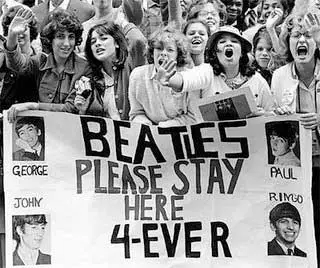
The Beatles not only captured the hearts and minds of a generation with their music; they also profoundly influenced the lifestyles and attitudes of youth around the world, catalyzing and often leading some of the most pivotal social movements of the 1960s.
Youth Identity and Lifestyle
The Beatles emerged during a time of significant social change, as post-war youths began to assert distinct cultural identities. With their innovative music, distinctive style, and public statements, The Beatles became role models for an emerging youth culture that was eager to break away from the conservative norms of the previous generation. Their approach to life and art encouraged self-expression, experimentation, and a questioning of traditional values, which resonated deeply with young people. The Beatles’ ease and confidence in expressing their individuality helped to embolden their fans to challenge conventions and authority in their own lives.
Fueling the Sexual and Cultural Revolutions
The sexual revolution of the 1960s, which emphasized freedom from traditional constraints and an increased openness about sexuality, was mirrored in the playful and sometimes provocative lyrics of The Beatles’ songs. Tracks like “I Want to Hold Your Hand” signified a more open expression of physical intimacy in popular media, while later songs like “Norwegian Wood” subtly referenced more mature themes of relationships and infidelity, reflecting the changing mores regarding romantic and sexual behavior.
Moreover, The Beatles were at the forefront of the counterculture movement that challenged nearly every aspect of mainstream culture. From their music and personal lives to their public statements, they encouraged questioning the status quo, which dovetailed with the growing movements for civil rights, gender equality, and social justice. Their song “Revolution,” for example, became an anthem for those seeking change and questioning authority.
Voices in the Anti-War Movement
During the Vietnam War, The Beatles used their platform to amplify anti-war sentiment, a stance that was particularly influential among their young fans. Their messages of peace and love, encapsulated in songs like “All You Need Is Love” and “Give Peace a Chance,” the latter released by John Lennon as a solo effort, resonated globally. Their public opposition to the war helped legitimize and energize anti-war movements, showing that popular musicians could play a significant role in political discourse.
Introducing Eastern Philosophies
Perhaps one of the most enduring aspects of The Beatles’ influence is their introduction of Eastern philosophies and spirituality to a Western audience. After their famous visit to India and their association with Maharishi Mahesh Yogi, they brought ideas from Eastern spirituality into the mainstream. This was not only evident in their music, which incorporated Indian instruments and styles, but also in their personal spirituality which encouraged a generation to seek different paths to fulfillment beyond material wealth. Songs like “Tomorrow Never Knows” and the album “Sgt. Pepper’s Lonely Hearts Club Band” reflect these influences and helped popularize these ideas among Western youths, sparking a surge in interest in meditation, yoga, and Eastern spirituality that continues to this day.
Media and Communication Breakthroughs
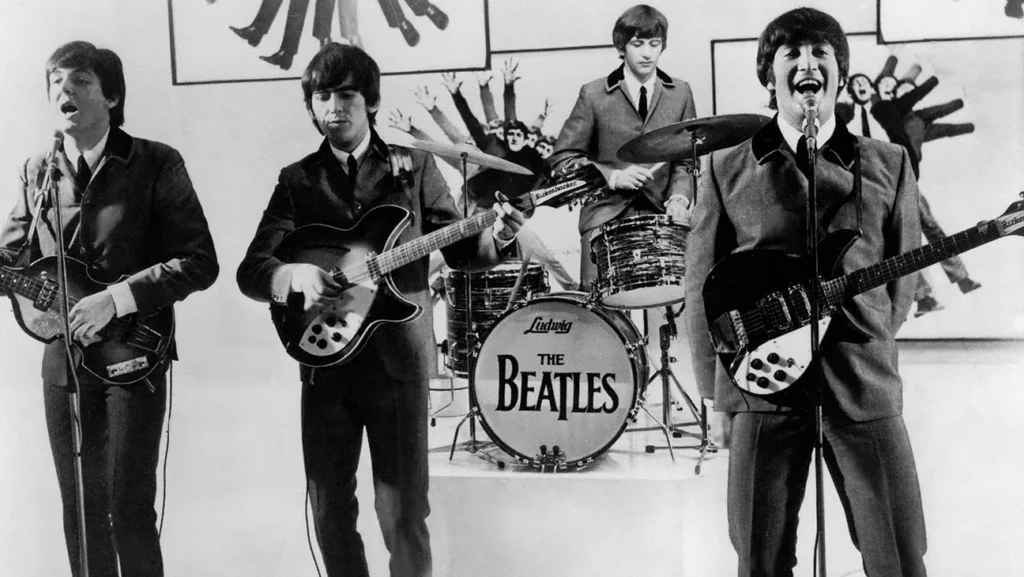
The Beatles not only revolutionized music during the 1960s but also transformed the landscape of media and communication. Their approach to engaging with media was innovative and set new standards for how artists could connect with their audience globally, playing a critical role in amplifying the spread of Beatlemania.
Mastering the Art of Television
One of the most significant media breakthroughs made by The Beatles was their pioneering use of television. Their landmark appearance on “The Ed Sullivan Show” in February 1964 is often cited as a seminal moment in television history. It was watched by approximately 73 million viewers—a record audience at the time—and marked the beginning of a new era in which television could create and amplify music phenomena on a scale never before seen. This appearance not only introduced The Beatles to a vast American audience but also showed the power of television as a medium for promoting musical artists.
Subsequent TV appearances, whether in live performances or pre-recorded music videos for songs like “Paperback Writer” and “Rain,” showcased their ability to use the medium creatively. These music videos, precursors to what would later become a staple of the industry, allowed The Beatles to reach audiences worldwide in a visually engaging way that was not dependent on constant touring.
Innovative Use of Recording and Broadcasting Technologies
Beyond television, The Beatles were pioneers in using the latest recording and broadcasting technologies to their advantage. Their partnership with producer George Martin and the use of Abbey Road Studios led to innovative studio techniques, including multitrack recording and new electronic effects, which enhanced their sound and set them apart from other music acts of the time. These technological advancements were not just about sound quality; they enabled The Beatles to create more complex and layered songs that were then communicated to their audience through records that sounded unlike anything else previously heard.
Creating a Global Connection with Fans
The Beatles also understood the importance of media as a tool to maintain and deepen their connection with fans. They were among the first bands to make significant use of international press conferences, global satellite broadcasts, and extensive interviewing, reaching millions of fans in a way that was personal and direct. Their playful and witty interaction with the press made headlines and endeared them further to their audience, making each interview an event in its own right.
The 1967 global satellite broadcast of “All You Need Is Love” during the “Our World” event exemplifies their savvy use of media to foster a sense of global community. Broadcast live to 25 countries and watched by an estimated 400 million people, it was a powerful demonstration of music’s ability to cross national and cultural boundaries, facilitated by emerging communication technologies.
The Beatles and the Artistic Landscape
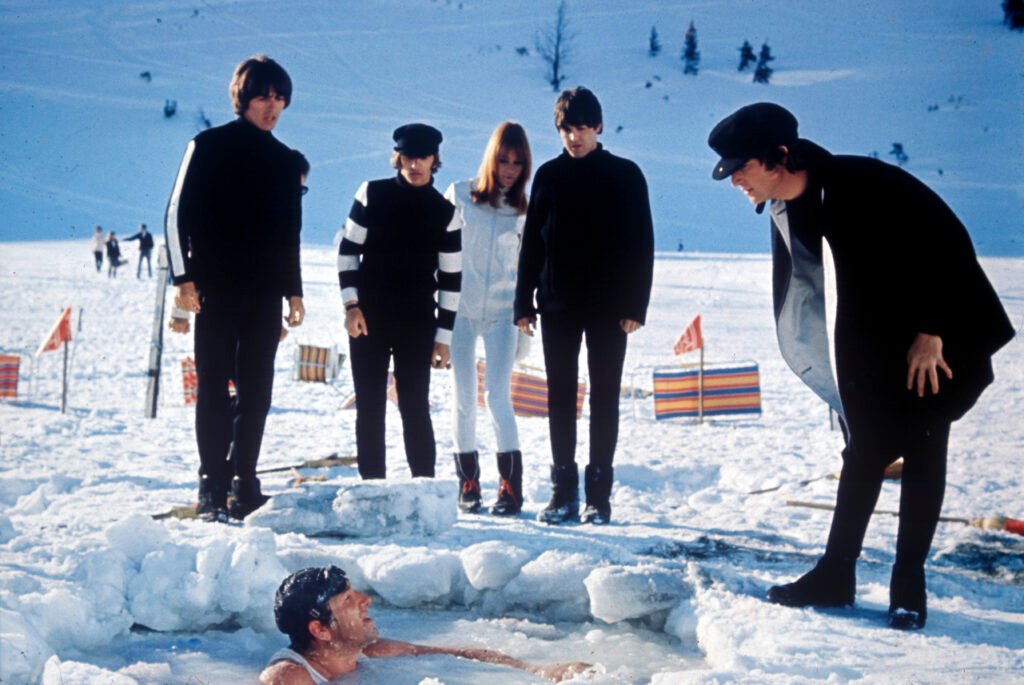
The Beatles not only led a musical revolution but also significantly shaped the artistic and commercial landscapes of the music industry. Their innovative use of music videos and films and their pivotal role in the shift towards album-oriented rock marked transformative changes that influenced generations of artists and reshaped consumer habits.
Pioneering the Music Video Format
Before the term “music video” became part of the industry lexicon, The Beatles were creating films and televised performances that would come to define the format. Their films, notably “A Hard Day’s Night” (1964) and “Help!” (1965), were among the first to integrate musical performances into narrative cinema, offering fans a new way to engage with music beyond live concerts and radio broadcasts. “A Hard Day’s Night,” directed by Richard Lester, featured quick cuts and camera techniques that mirrored the energy of the band’s music, influencing the editing style of future music videos.
These films also showcased the potential for music videos to extend an artist’s persona and narrative beyond the music itself, setting the stage for what would become a crucial aspect of music marketing in the MTV era and beyond. The Beatles’ promotional films for singles like “Strawberry Fields Forever” and “Penny Lane,” released in 1967, further pushed the boundaries by using conceptual and abstract imagery not tied to live performance, presaging the modern music video’s creative potential.
Shaping Album-Oriented Rock
The Beatles were instrumental in the evolution of popular music from a singles-oriented industry to one focused on albums. Starting with the 1965 release of “Rubber Soul,” they began to treat the album as a cohesive work of art, rather than just a collection of singles with additional filler tracks. This approach was further developed with “Revolver” and reached its zenith with “Sgt. Pepper’s Lonely Hearts Club Band” in 1967, which is often regarded as one of the first concept albums.
“Sgt. Pepper’s” showcased an unprecedented level of thematic and musical cohesion, changing the way artists, record labels, and audiences thought about the album format. It encouraged artists to experiment more broadly with their records, both musically and lyrically, and led to the album being perceived as the primary vehicle for artistic expression in rock music. This shift had a lasting impact on consumer habits, as music fans began to buy full albums rather than just singles, fostering a deeper engagement with the artist’s work.
Changing Consumer Habits
The Beatles’ emphasis on albums contributed to a cultural shift in how music was consumed and appreciated. Albums like “Sgt. Pepper’s,” “The White Album,” and “Abbey Road” were not just collections of songs, but immersive experiences meant to be listened to in one sitting, with the track order carefully considered to enhance the listening experience. This encouraged listeners to invest in higher-quality home sound systems and spurred the industry to improve the technology used in recording and playback equipment.
Influence on Language and Idioms
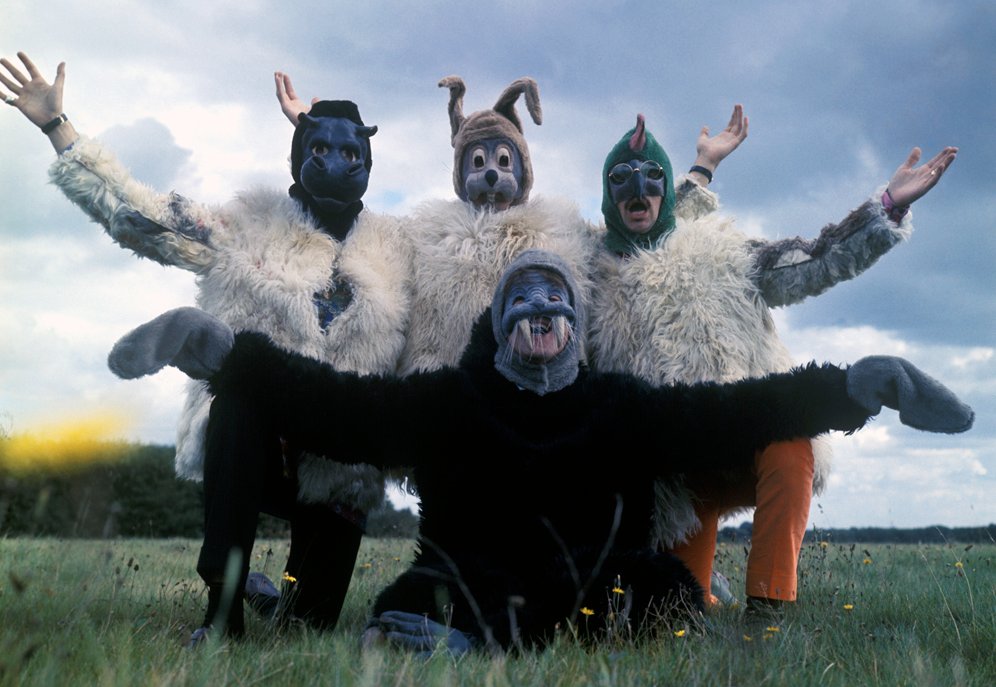
The Beatles’ impact on popular culture extended deeply into the realm of language, where their lyrical inventiveness and catchy phrases significantly enriched English vernacular. Their songs introduced new phrases and concepts that have since become embedded in everyday language, reflecting their broader cultural influence and the enduring appeal of their music.
Introducing New Phrases to Everyday Language
The Beatles were masterful lyricists who often played with words, creating memorable phrases that resonated well beyond their music. For instance, the term “Beatlemania” itself became a catch-all descriptor for the intense fan frenzy surrounding the band, and it has since been adapted to describe similar phenomena in other contexts. Other phrases from their lyrics, such as “strawberry fields forever” and “a hard day’s night,” have entered common parlance, evoking specific attitudes or feelings associated with their songs.
The phrase “All you need is love,” from the song of the same name, has been widely adopted as a slogan for peace and hope. Similarly, “Let it be,” from their final album, has become a common expression of letting go of one’s troubles or accepting situations as they are. These phrases encapsulate broader philosophical ideas that have appealed to multiple generations and continue to be used in various forms of media and personal discourse.
Linguistic Creativity and Evolving the English Language
The Beatles’ lyrics often showcased a playful and innovative use of language, which not only made their songs catchy but also influenced the evolution of English, particularly in the creative realm. They coined neologisms and engaged in wordplay that expanded the expressive capacity of the language. For example, in “Lucy in the Sky with Diamonds,” they describe “tangerine trees and marmalade skies,” phrases that reflect a whimsical, almost surreal linguistic style that became synonymous with the psychedelic era.
Their song “I Am the Walrus” is filled with nonsensical lines and imagery that challenge traditional syntax and narrative coherence, reflecting the band’s experimental approach not just to music but to lyric writing. This approach influenced how song lyrics could convey complex, abstract concepts and emotions, pushing the boundaries of language within the music industry and beyond.
Furthermore, John Lennon’s book “In His Own Write” features stories and poems that play with language in unconventional ways, demonstrating his influence on the literary as well as the musical world. The Beatles’ exploration of the flexibility and malleability of language not only made their lyrics distinctive but also encouraged listeners and other artists to see and use English in new and imaginative ways.
The Beatles’ Impact on Globalization
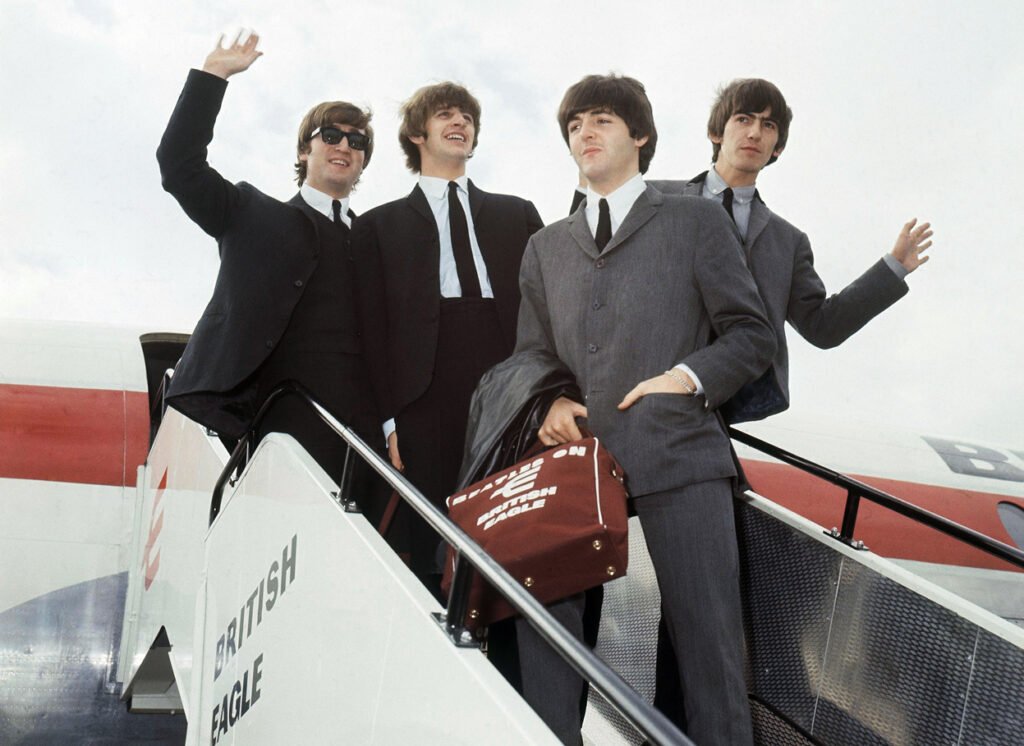
The Beatles not only changed the landscape of popular music but also played a pivotal role in the globalization of Western culture. Through their international tours, diverse musical influences, and universal appeal, they helped bridge continents and cultural divides, making an indelible mark on global music and cultural exchange.
Worldwide Tours and Cultural Exchange
The Beatles’ touring schedule in the early to mid-1960s took them to numerous countries outside their native United Kingdom, including the United States, Canada, Sweden, France, Australia, and Japan. These tours were more than just musical performances; they were significant cultural events that attracted immense media attention and facilitated a two-way cultural exchange. For instance, their visit to the United States in 1964 not only introduced Americans to British pop music but also allowed The Beatles to absorb and later integrate American musical styles, such as the Motown sound, into their music.
Their 1966 tour included a visit to India, which had a profound impact on their music and personal philosophies. This visit highlighted how The Beatles were not just exporting Western music but were also importing non-Western musical styles and instruments into their songs, as seen in tracks like “Norwegian Wood” (which featured the sitar) and “Within You Without You” (inspired by Indian classical music).
Influence in Non-Western Countries
The Beatles’ influence extended far beyond the Western world, impacting music and cultural perceptions in non-Western countries. In India, for example, their exploration of Indian music and collaboration with sitar maestro Ravi Shankar opened Western audiences to Indian classical music, which enjoyed a surge in popularity in the West as a result.
In the Soviet Union, where Western pop music was officially discouraged, The Beatles’ music became a symbol of cultural freedom and was distributed through underground networks of bootleg recordings. Their music inspired a generation of Soviet youth to seek greater openness and influenced the rise of rock bands in the USSR, who emulated their style and music despite the risks associated with such expressions of Western cultural affinity.
Globalizing Western Culture
The Beatles were instrumental in the widespread adoption of Western pop culture around the globe. Their success overseas not only paved the way for numerous other Western artists but also demonstrated the universal appeal of their music and the potential for cross-cultural influence in the arts. The Beatles helped popularize the use of English in popular music internationally, contributing to English’s status as a global lingua franca in the music industry.
Furthermore, their innovative use of global musical influences and the integration of diverse cultural elements into their music helped lay the groundwork for what would later be known as “world music.” This genre would continue to explore and celebrate the blending of different cultural sounds and traditions, a movement that The Beatles were among the first to popularize on a global scale.
Legacy and Continuing Influence
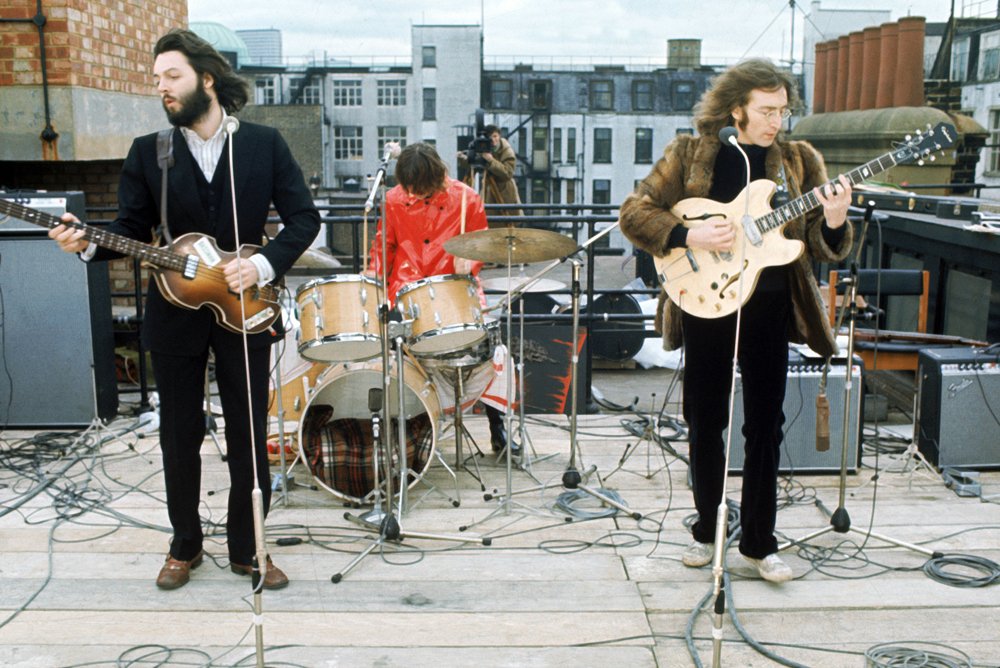
More than half a century after their heyday, The Beatles continue to leave an indelible mark on contemporary culture. Their legacy permeates music, fashion, film, and broader societal dialogues, influencing new generations and continuing to resonate across the globe.
Enduring Musical Influence
The Beatles’ impact on music remains profound and pervasive. Their innovative recording techniques, songwriting, and genre-blending continue to inspire musicians and producers across various genres. Bands and artists from diverse musical backgrounds cite The Beatles as a major influence on their work, reflecting the band’s broad stylistic range—from rock and pop to psychedelic and experimental music. Albums like “Sgt. Pepper’s Lonely Hearts Club Band” and “Abbey Road” are still studied in music production courses for their groundbreaking approaches to studio recording and song structure.
Fashion and Artistic Inspiration
The Beatles’ influence also extends into the world of fashion, where their iconic styles from the 1960s—such as mop-top haircuts, Chelsea boots, and Nehru jackets—periodically return to vogue. The enduring appeal of their early mod look and later psychedelic styles continues to inspire fashion designers who seek to blend vintage and contemporary aesthetics.
In film and multimedia, The Beatles’ pioneering music videos and movies paved the way for the integration of visual and musical storytelling, influencing the development of music videos and the visual presentation of music. Their films, especially “A Hard Day’s Night,” are considered precursors to the modern music video and have influenced the techniques used in film and television to convey musical narratives.
Broader Cultural Dialogues
The themes explored in The Beatles’ music—such as love, peace, and resistance—remain relevant, resonating with new audiences and movements concerned with social justice and personal freedom. Their songs have been adopted by various cultural and political movements as anthems for change and unity. Furthermore, their experimentation with Eastern philosophies introduced many in the West to alternative spiritualities and practices, a legacy that continues in the widespread interest in mindfulness and meditation.
Modern Pop Culture Phenomena and Fandom
The model of fandom that Beatlemania represented set the stage for modern celebrity culture. The intense devotion they inspired can be seen today in the passionate followings of contemporary bands and artists. Social media platforms have magnified this phenomenon, allowing fans to create communities and engage with artists in ways that echo the fan clubs and frenzied concert attendances of The Beatles’ era.
Moreover, The Beatles’ music continues to be discovered by new generations, thanks to the timeless quality of their compositions and the digital availability of their catalog. Streaming services, documentary films, and new compilations and remixes of their work ensure that The Beatles remain a staple in global music consumption, demonstrating the enduring appeal and relevance of their artistry.
The legacy of The Beatles is not confined to nostalgia; it is a vibrant and evolving influence on contemporary culture. Their music, image, and innovative spirit continue to inspire and challenge artists and audiences, proving that The Beatles are not just a historical phenomenon but a perennial touchstone in the cultural landscape.
